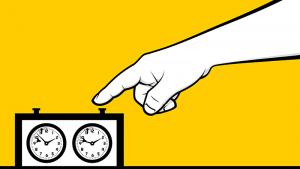
Bobby Fischer's Beautiful Bishops
Bobby Fischer was one of the most well-rounded players in history. He was at once a tactical wizard and a positional genius, a theoretical expert and a peerless endgame player.
He was essentially unbeatable in match play largely because his opponents found it impossible to adjust after losing a game -- Bobby was equally dexterous in every conceivable type of position.
A few years ago, I was perusing GM Mihail Marin's excellent work, Learn From the Legends: Chess Champions at Their Best (Quality Chess, 2006).
Marin dedicates each chapter to a world champion, and scrutinizes one particular aspect of their prowess -- Tal's handling of the rook against two minor pieces, Karpov's technique in opposite-colored bishop endings, Petrosian's exchange sacrifices, and so on.
In the introduction to the chapter on Bobby Fischer, Marin makes a fascinating observation: "I also discovered that [Fischer] had a predilection for the king's bishop (meaning the light-squared bishop as White and the dark-squared bishop when playing with the black pieces)."
Marin corroborates his remark with several deeply analyzed games, where Fischer's handling of the bishops in general -- and of the king's bishop in particular -- is nothing short of astounding.
In this article, I would like to shed some further light on Bobby's mastery of the bishop by examining several of his lesser-known efforts.

My favorite Fischer game of all time is definitely his victory against GM Mark Taimanov in round four of their Candidates quarterfinal match.
A word of warning is in order: all of your preconceived notions about the bishop's limited scope will be overturned!
What needs to be said? I remember analyzing this game time and again, unable to believe that the bishop could perform such titanic feats before sacrificing itself for the greater good.

In Fischer's hands, the king's bishop acquired a greater power, flying around the board and wreaking havoc while its vis-a-vis could only watch in stupefaction.
In the following game, this power is put on full display once more, as Bobby turns lead into gold with a spectacular maneuver.
I can hear the question on the tip of your tongue: If one bishop is a three-headed monster in Fischer's hands, what happens when he has the two-bishop advantage?
Hopefully, the following magical display will provide a worthy answer!
Even at 13 years old, Bobby's matchless combination of positional acumen, tactical precision, and utter fearlessness shines through. Nash was a strong and experienced player (as well as a division chief at the Bureau of Labor Statistics), but Bobby's bishops sliced through his position like a knife through butter.
Bobby's attachment to his bishops is evident, but he certainly did not hesitate to use the bishop as a sacrificial lamb, jettisoning it or trading it to break through.
In our final game, he does just that, shattering the backbone of his opponent's position with a lovely tactic.
We can't all play like Bobby, but we can all remember that the bishop is a very special piece.
By itself, or working with a partner, the bishop can wreak unimaginable havoc simply by virtue of its existence.
Bishop on, my friends!
RELATED STUDY MATERIAL
- Read GM Naroditsky's last article, How To Save Yourself With Stalemate.
- Watch GM Ben Finegold's video: My Dad's Game With Bobby Fischer.
- Check out Bobby Fischer in the All-Time World Chess Champion Bracket.
- Practice creating deadly bishops in the Chess Mentor.
- Practice your bishop tactics in the Tactics Trainer.
- Looking for articles with deeper analysis? Try our magazine:The Master's Bulletin.

